Horizontal textile balers can pack a large amount of waste textiles in a short time. Compared with other types of textile balers, this horizontal textile baler is characterized by high output and efficiency. Next, we will give you a detailed introduction to Horizontal Textile Baling Machine. Through this article, you can learn the advantages, structure, parameters, application range, usage, and other detailed information about this machine.
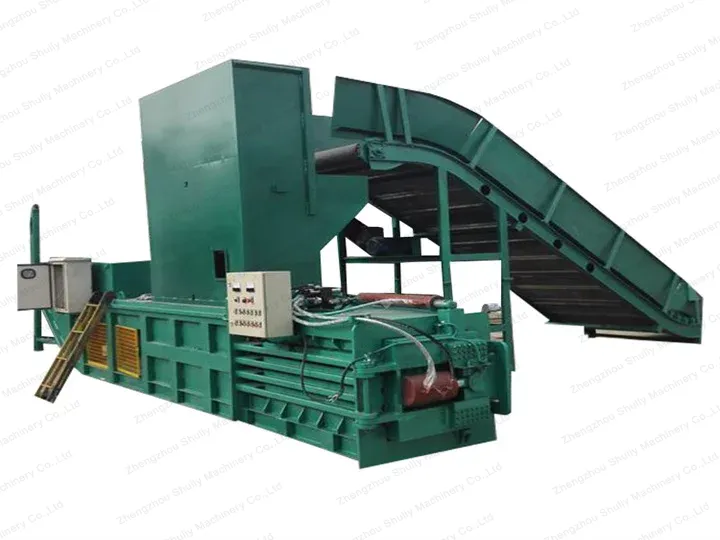
What Is Horizontal Textile Baler?
Shuliy horizontal textile baler is a machine used in recycling facilities or textile industries to compress and compact various types of textiles, such as clothing, fabric scraps, or other textile materials, into dense and manageable bales.
Advantages of Shuliy Horizontal Textile Baler
- Compared with vertical textile balers, horizontal textile baler has a higher production capacity
- Simple operation of the machine.
- Wide range of applications, this machine can also pack cardboard, plastic bottles, tires, thin scrap metal, and many other different materials.
- You can choose the size of bales according to your needs.
- A variety of models for customers to choose
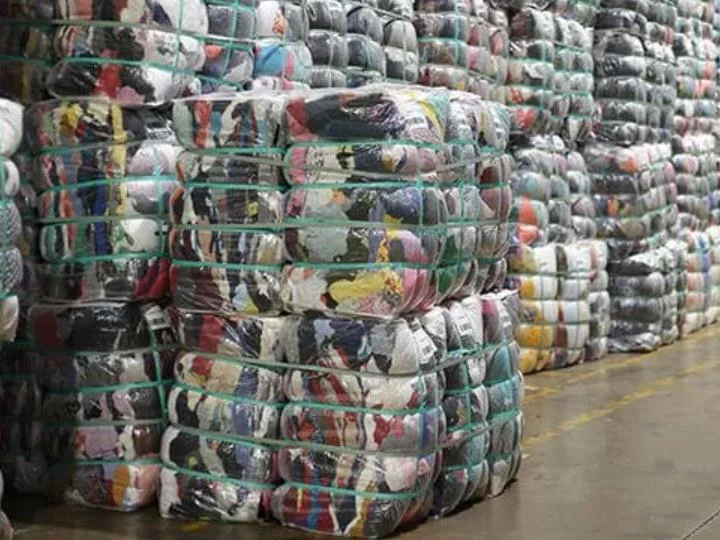
Horizontal Textile Baler Technical Data
| Model | Power(kw) | Baling size(mm) | External dimensions(mm) |
| SL-60T | 18.5 | 1200x600x700 | 5000x1022x1700 |
| SL-100T | 22 | 1400x1100x800 | 6800x1700x1800 |
| SL-120T | 22 | 1400x1100x800 | 6800x1700x1800 |
| SL-140T | 22 | 1400x1100x800 | 7000x1700x1800 |
| SL-160T | 37 | 1800x1100x1250 | 9600x2300x3600 |
These are just some of the parameters of a horizontal textile baler. Besides, we have other models of textile balers for sale. If you have other needs, please feel free to contact us. Our sales will contact you as soon as possible. And we will recommend you the right machine for you.
Working Principle of Horizontal Baler for Textile
Horizontal textile balers have a horizontal chamber where the materials are fed. Once inside, the baler compresses the textiles using hydraulic power, tying them tightly together with wires or straps to form uniform bales. This process makes the transportation, storage, and recycling of textiles more efficient and cost-effective.
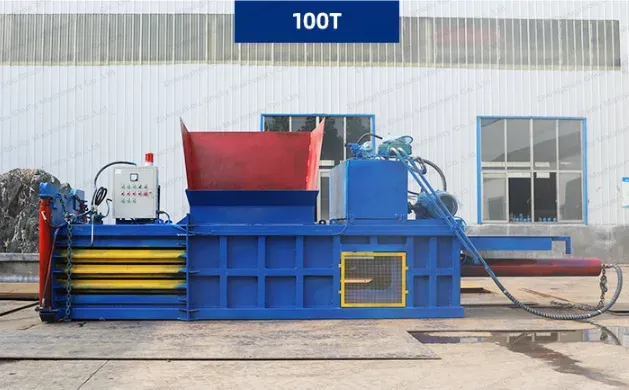
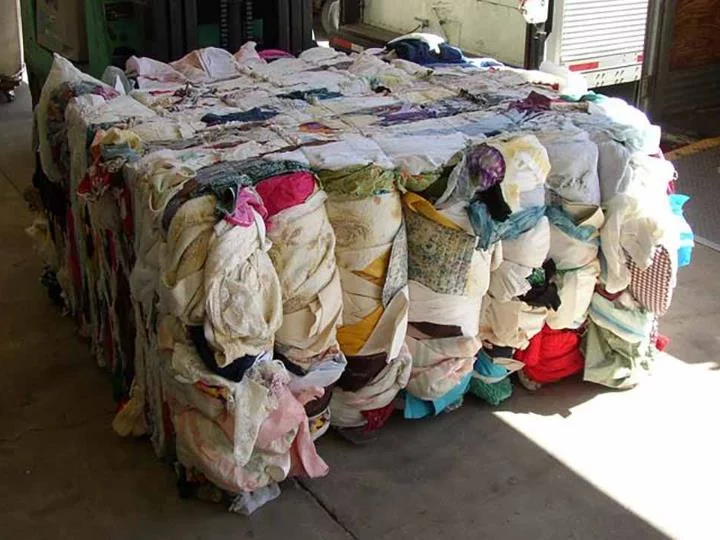
Structure of Horizontal Textile Baling machine
The horizontal textile baling machine consists of the wire reel, oil pipe, oil tank, main motor, auxiliary motor, inlet, filter, multi-way reversing valve, electric box, rope threader, fixed bracket, locking cylinder, electric control cabinet, and outlet. The main operating systems of the machine are the compaction system and the strapping system.
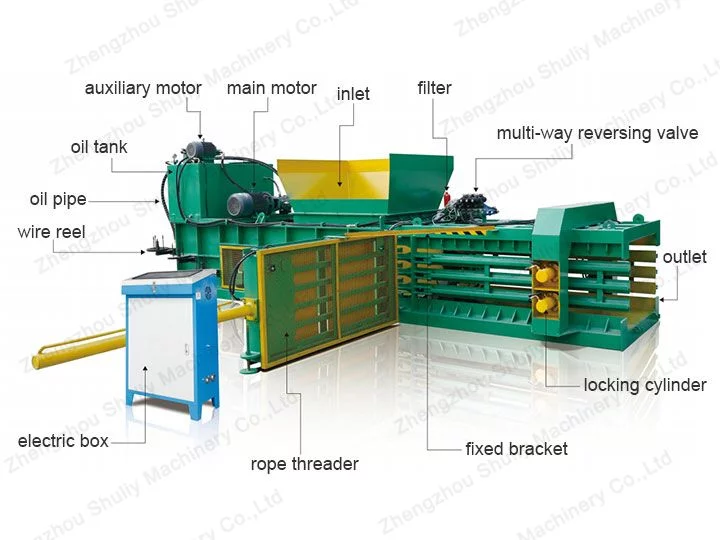
Horizontal Clothing Baler Machine vs. Vertical Textile Balers
Horizontal clothing balers and vertical textile balers are two common types of textile baling equipment with some differences in function and application.
Horizontal Baler for Textile
Horizontal balers for textiles have a horizontal studio where textile material is compressed and baled horizontally. This design makes them more suitable for handling large quantities of textiles. Because they typically have a higher capacity, they can consistently produce large, dense bales. In addition, horizontal clothing balers are simpler to operate and easier to maintain.

Vertical Textile Balers
On the other hand, vertical textile balers have vertical studios where textiles are compressed and baled in a vertical direction. Vertical balers are designed to be more suitable for space-constrained environments as they occupy less floor space. However, vertical balers typically have a lower capacity and are suitable for processing smaller batches of textiles.
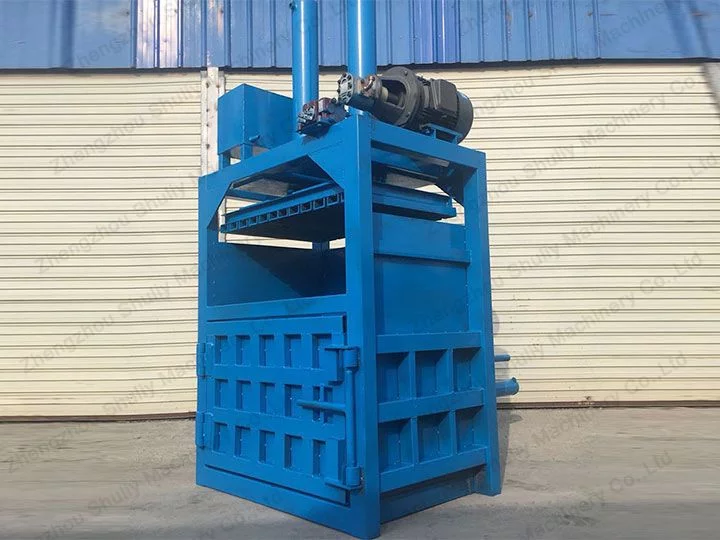
When choosing which type of textile baler to use, it is important to consider the space constraints of the workplace, the expected capacity requirements, and the type and quantity of textiles being processed.
Horizontal Textile Baler Scope of Application
Horizontal baler machines for textiles can be used in various industries such as garment factories, textile recycling centers, logistics, and warehousing industries. In addition, the horizontal baler machine for textiles not only bales textiles such as used clothes, but also cans, plastic bottles, used cartons, plastic film, animal hair, light metals, paint buckets, and many other materials.
If you are not sure whether your materials can be handled by this horizontal baler, please contact us. We will get back to you as soon as possible.

How to Use the Horizontal Textile Baler Correctly?
Understand the operation manual: Read and understand the operation manual of the Horizontal Textile Baler in detail before use.
Preparation
Ensure that the working area is clean and tidy and that there is no debris obstructing the operation.
Loading textile material
Gradually place the textile to be compressed into the horizontal chamber of the baler. Take care to distribute the material evenly to ensure an even and tight wrap. We can equip you with a conveyor belt if required.
Setting the parameters
Depending on the type of textile and the size of the parcel required, adjust the compression and baling parameters on the control panel, e.g. pressure, parcel size, etc.
Starting the machine
Make sure that all operators are away from the baler and start the machine according to the instructions in the operating manual.
Monitor the process
During the compression and baling process, continuously monitor the machine’s operation. Watch for any unusual sounds, vibrations, or signs of machine malfunction.
Remove packages
When compression and baling are complete, turn off the machine and wait for it to stop. Finally, remove the compressed textile packages.
Clean-up and Maintenance
At the end of use, clean up any debris around the machine and carry out regular maintenance on the machine, including cleaning and lubrication.
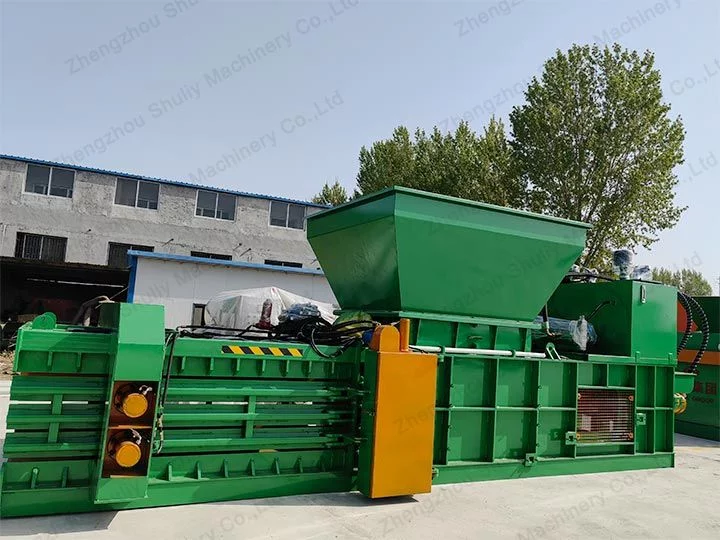
How to Choose the Right Horizontal Textile Baler?
Capacity requirements
The capacity of the machine needs to be determined by the amount of textiles to be processed per day/hour. Large-scale production requires a high-capacity machine, while small-scale use can be accommodated by choosing a vertical textile baler with a smaller capacity.
Adjustable parameters
Choose a machine with adjustable parameters for pressure, parcel size, and baling method. Choose a machine that meets your needs based on the required parcel size and pressure level.
Machine Size and Space Requirements
Considering the space constraints in the workplace, select the right size machine to ensure that it can be placed in the work area without interfering with other operations.
Ease of Operation and Maintenance
Choose a horizontal textile baler that is easy to operate and maintain, and that is clean. Maintenance and troubleshooting should be relatively simple to ensure that the machine operates consistently over time.
